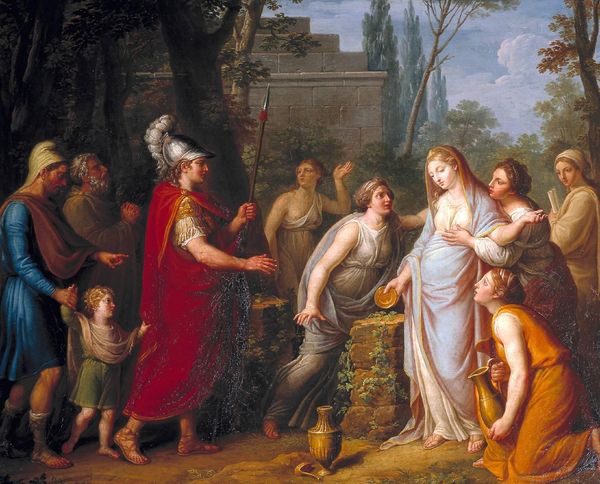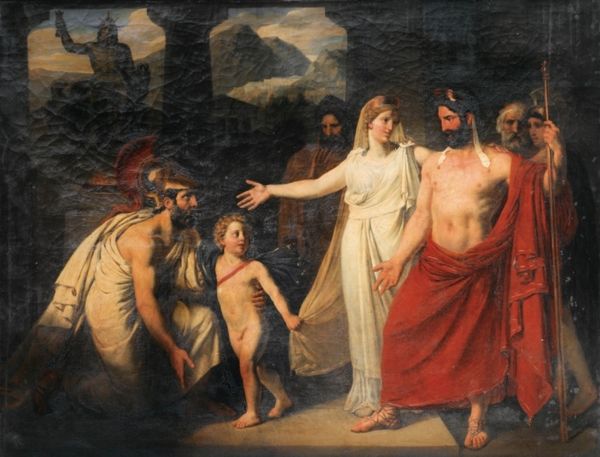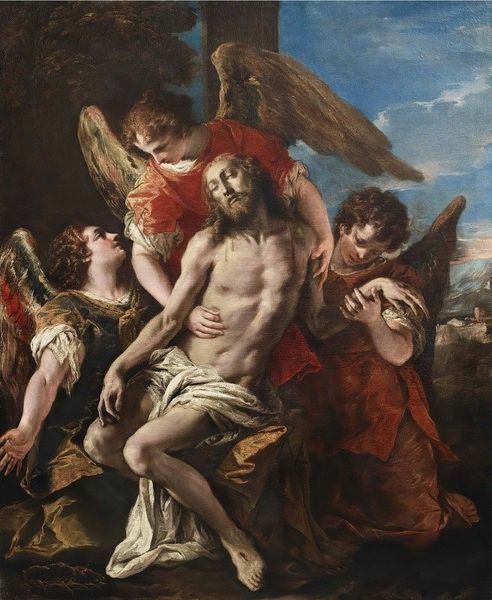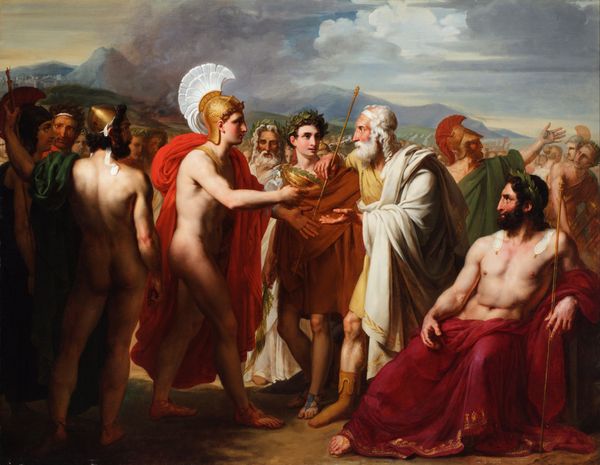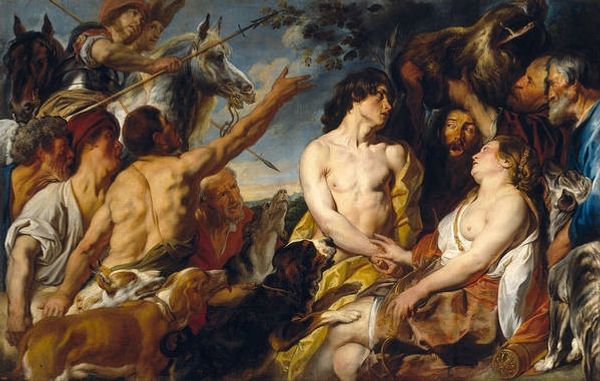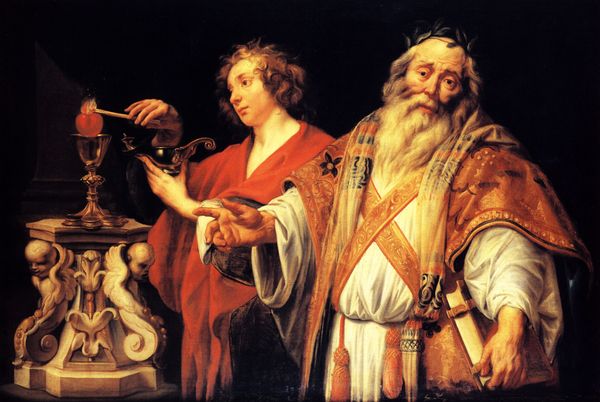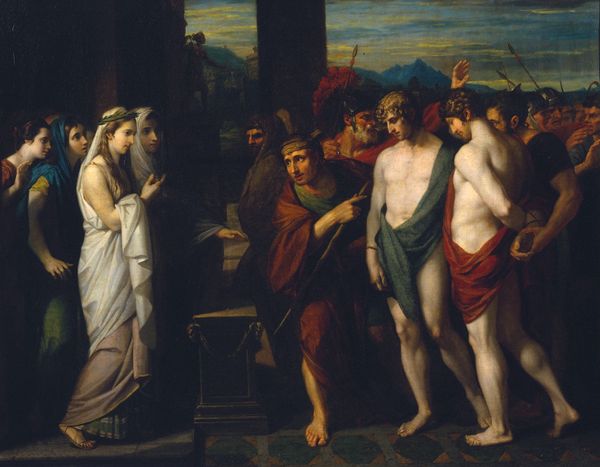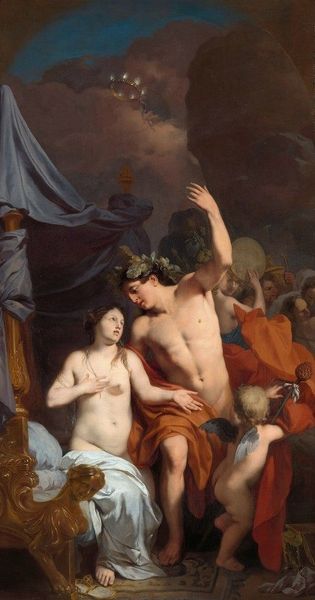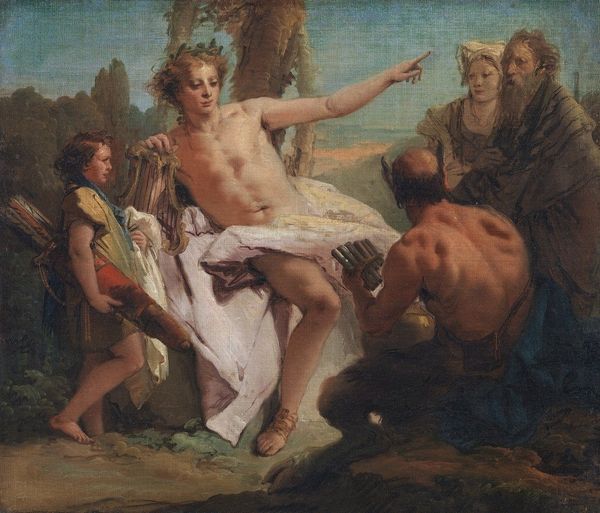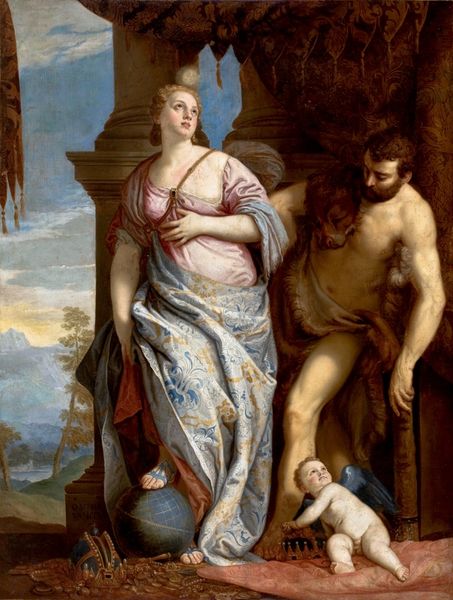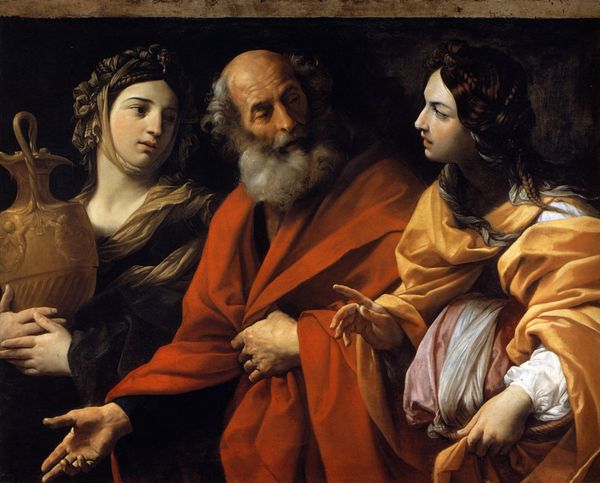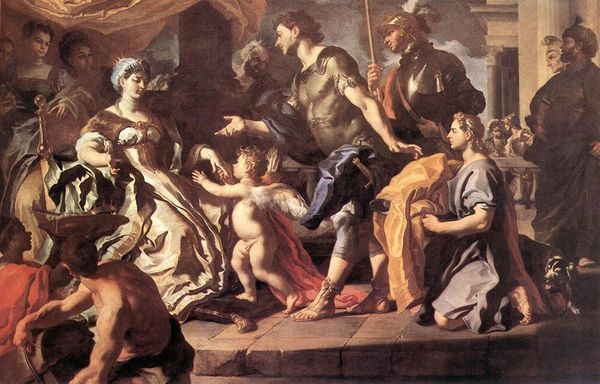
painting, oil-paint
#
portrait
#
neoclacissism
#
allegory
#
painting
#
oil-paint
#
landscape
#
classical-realism
#
figuration
#
mythology
#
history-painting
Copyright: Public Domain: Artvee
Editor: This is Jacques Louis David's "The Anger of Achilles," painted in 1819 using oil on canvas. The figures appear caught in a moment of dramatic stillness; Achilles, especially, seems rigid, and I wonder about that tension in the composition. What strikes you when you look at it? Curator: The composition immediately suggests a highly structured and staged scene. Notice the sharp lines of the figures, especially Achilles, and how they contrast with the softer forms of the women. It creates a visual hierarchy. The artist clearly emphasizes line and form over painterly brushwork. Note the deployment of red—the drapery, the helmet plumage—used strategically to frame and almost contain the figures. What do you make of that choice of color? Editor: I see how the red pops, and it kind of makes sense. The limited color palette heightens the drama without overwhelming it. Also, look at how the gaze of each figure pulls you into different spaces within the painting. Does this visual organization contribute to the story being told? Curator: Indeed. Consider the arrangement and gestures: they speak of frozen passions and impending action. See how the architectural qualities – the pillar-like stances – suggest the weight of history and destiny bearing down on these figures? It emphasizes a crucial turning point through pure form. Are you perceiving a narrative unfolding, purely through compositional cues? Editor: Absolutely. I initially felt a static quality, but the arrangement definitely communicates rising action. Thank you, viewing it with an eye towards form and structure revealed a whole new layer of meaning. Curator: Precisely. A close study of the visual elements alone provides a very rich interpretive framework.
Comments
No comments
Be the first to comment and join the conversation on the ultimate creative platform.
